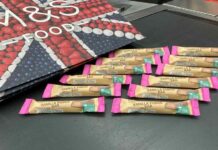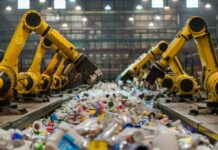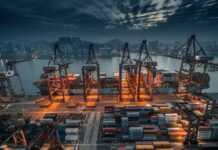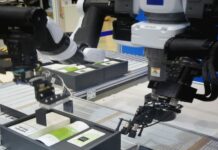A collaboration between researchers at the Korea Advanced Institute of Science and Technology (KAIST) and Yonsei University has created a novel “high-performance, sustainable” paper coating material designed to reduce microplastic pollution.
The coating utilizes boric acid-crosslinked polyvinyl alcohol (PVA), a biodegradable plastic that is said to enhance paper’s barrier properties and strength without compromising its environmental sustainability.
The researchers say the boric acid-crosslinked PVA-coated paper demonstrated “superior performance,” outperforming traditional plastic coatings in terms of barrier properties and physical strength, even in humid conditions.
The team conducted biodegradation tests by simulating marine environments, which the researchers say are notoriously challenging for biodegradation.
They employed a respiratory system-based bioreactor to measure carbon mineralization into carbon dioxide, revealing that the coated paper achieved 59–82% biodegradation over 111 days, depending on the coating composition.
Microscopic examinations showed marine bacteria actively decomposing the coating material, and biocompatibility tests confirmed low toxicity in human and mouse cells, alongside high in-vivo compatibility in mice.
“The development of a marine biodegradable high-performance paper coating is the result of combining the innovative technologies of three leading research teams in each field. We will continue to develop sustainable materials with excellent performance,” says professor Jaewook Myung at KAIST, who led the sustainability study of coated paper.
Sustainable barriers
The findings were published in the journals Green Chemistry and Food Chemistry. The Korea Research Foundation and the Korea Institute for Agriculture, Food and Rural Affairs Technology Planning and Evaluation supported the research.
“Through this research, we have developed a sustainable paper packaging technology that can replace non-degradable plastic packaging and we expect the research outcome will be applied in industry,” states professor Jongchul Seo of Yonsei University, who led the research on the development of high-performance paper coating.
Global market researcher Innova Market Insights highlighted “Breakthrough Barriers” as a top packaging trend for 2024. As paper-based packaging manufacturers unlock growth potential in fresh food with plastic-free barrier innovations, coatings are now a key focus in almost every part of the industry.
The novel boric acid-crosslinked PVA coating, developed by the joint KAIST-Yonsei University team, “provides a promising strategy for paper packaging that enhances packaging performance without compromising environmental sustainability.”
“Since packaging accounts for 31% of global plastic consumption, biodegradable packaging material has been of particular interest. Paper is widely used as a biodegradable packaging material, yet its practical application is limited due to poor water resistance, oxygen and vapor barrier properties and mechanical strength. Surface coating technique is a well-established commercial practice to impart the desired property to paper,” write the researchers.
“Currently, petroleum-based synthetic polymers, including PE, PP and ethylene vinyl alcohol , are extensively employed to increase the barrier properties of paper-based packaging. However, these non-degradable barrier coatings can cause environmental pollution and potential health issues.”




























